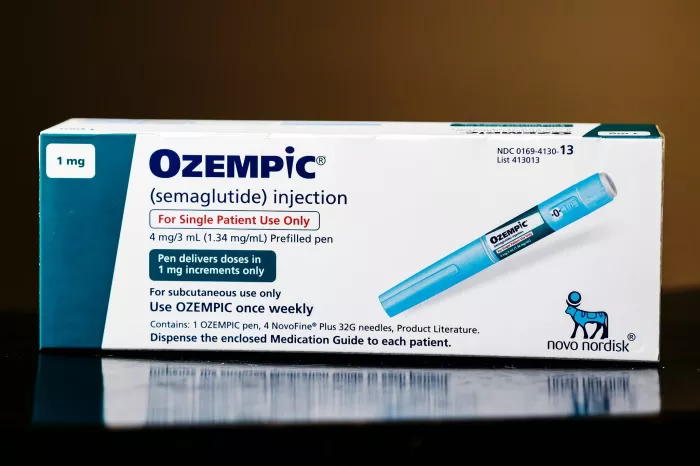Scars, the visible markers of the skin’s remarkable ability to heal, often prompt questions about their permanence. In this comprehensive exploration, we unravel the intricacies of scar formation and the factors that influence whether a scar becomes a lasting feature. Understanding the nuances of scar evolution empowers individuals to navigate the journey of healing with informed perspectives. Join us as we delve into the science of scars and decipher the key indicators that unveil whether a scar is destined to be permanent.
The Dynamic Process of Scar Formation
Nature’s Response to Injury:
Scars arise as a natural response to injuries that penetrate the skin’s dermal layer. When the skin is wounded, the body initiates a complex cascade of events involving inflammation, cell proliferation, and tissue remodeling. The type and extent of the injury, as well as individual factors, contribute to the unique characteristics of each scar.
The Three Phases of Healing:
Scar formation unfolds in three primary phases: inflammatory, proliferative, and remodeling. In the inflammatory phase, blood vessels constrict to minimize bleeding, and immune cells clear debris and combat potential infections. The proliferative phase involves the production of new tissue by fibroblasts, leading to the formation of the initial scar. Remodeling, the final phase, entails the refinement and maturation of the scar tissue over time.
Factors Influencing Scar Formation
Wound Depth and Size:
The depth and size of the wound play a pivotal role in determining scar outcomes. Deeper wounds that extend into the dermis are more likely to result in noticeable scars. Larger wounds may necessitate more extensive tissue repair, influencing the final appearance of the scar.
Location on the Body:
The location of the wound on the body can impact scar visibility. Areas with thicker skin, such as the back, may produce less noticeable scars than more exposed and delicate areas like the face or hands. Flexural areas, where the skin moves frequently, also pose challenges to scar maturation.
Individual Healing Characteristics:
Individual variations in healing characteristics contribute to the diversity of scar outcomes. Factors such as genetics, age, and overall health influence the body’s ability to regenerate tissues and modulate the inflammatory response. Genetic predispositions can determine whether an individual is more prone to hypertrophic or keloid scarring.
Types of Scars: Understanding the Varieties
Normal or Mature Scars:
Normal or mature scars represent the body’s successful completion of the healing process. Over time, these scars fade, becoming less noticeable and blending with the surrounding skin. While they may not completely disappear, normal scars are generally considered permanent but may continue to improve in appearance.
Hypertrophic Scars:
Hypertrophic scars result from an overproduction of collagen during the healing process. Unlike keloid scars, hypertrophic scars remain within the boundaries of the original wound. They can be red, raised, and may cause itching or discomfort. While hypertrophic scars are often considered permanent, they may improve with time and proper management.
Keloid Scars:
Keloid scars, characterized by excessive collagen production that extends beyond the original wound, can be more pronounced and extend beyond the boundaries of the injury. Keloids may continue to grow over time and are considered a more challenging form of scarring. Their permanence varies, and treatment options aim to manage their size and symptoms.
Indicators that a Scar May be Permanent
Persistent Redness and Inflammation:
Prolonged redness and inflammation at the scar site may indicate ongoing tissue remodeling. While initial redness is a natural part of the healing process, persistent discoloration could suggest that the scar is still in the maturation phase. Time, proper care, and interventions may contribute to resolving this aspect of scar appearance.
Continued Itching or Discomfort:
Persistent itching or discomfort at the scar site might suggest ongoing activity within the scar tissue. While some level of sensitivity is normal during the healing process, prolonged or intense itching may be indicative of incomplete scar maturation. Monitoring and addressing these symptoms can be crucial in scar management.
Lack of Improvement Over Time:
A lack of visible improvement in the scar’s appearance over an extended period may raise concerns about its permanence. Normal scars typically evolve and become less noticeable with time. If a scar remains largely unchanged or exhibits minimal improvement, it may suggest that the scar has reached a stable state.
Effective Scar Management Strategies
Early Intervention:
Early intervention plays a crucial role in optimizing scar outcomes. Initiating appropriate care during the early stages of wound healing can help minimize factors that contribute to excessive scarring. This includes keeping the wound clean, avoiding tension on the healing tissue, and using topical treatments as recommended.
Topical Treatments and Silicones:
Topical treatments, such as silicone-based products, have demonstrated effectiveness in managing scars. Silicone sheets or gels create a protective barrier, hydrate the scar, and modulate collagen production. Consistent and early application of these treatments can contribute to improved scar outcomes.
Corticosteroid Injections:
For hypertrophic and keloid scars, corticosteroid injections may be recommended. These injections help reduce inflammation and inhibit collagen production. Multiple sessions may be required, and results can vary. Early intervention with corticosteroids may prevent excessive scar formation.
Laser Therapy and Surgical Revision:
Laser therapy and surgical revision are options for certain types of scars. Laser treatments can address discoloration and texture irregularities, while surgical revision involves removing and repositioning the scar. These interventions are typically considered when scars pose functional or aesthetic concerns.
The Importance of Patience in Scar Management
Scar Maturation Takes Time:
Patience is a key virtue in scar management. Scar maturation is a gradual process that can take months to years. Expecting immediate perfection may lead to frustration. Consistent and diligent care, coupled with professional guidance, contributes to the best possible scar outcomes.
Embracing the Unique Journey:
Each scar tells a unique story of the body’s resilience and healing capacity. Embracing the uniqueness of the scar’s journey, including its imperfections, fosters a positive mindset. While some scars may fade significantly, others may remain as subtle reminders of the body’s remarkable ability to overcome challenges.
Consultation with Healthcare Professionals
Individualized Approach:
Consulting with healthcare professionals is paramount in scar management. They can assess the specific characteristics of the scar, consider individual health factors, and tailor interventions accordingly. An individualized approach ensures that the chosen strategies align with the unique needs of each person.
Expert Guidance on Treatment Options:
Scar management often involves a combination of approaches, and healthcare professionals can provide expert guidance on the available treatment options. From conservative measures to more advanced interventions, the decision-making process benefits from the insights of experienced professionals.
Conclusion
In conclusion, determining if a scar is permanent involves a nuanced understanding of the factors influencing scar formation, the types of scars, and key indicators during the healing journey. While normal scars are generally considered permanent but improve with time, hypertrophic and keloid scars present additional challenges. Recognizing the potential indicators of scar permanence allows individuals to adopt proactive and informed approaches to scar management.
Effective scar management is a collaborative effort that combines individual care practices with professional guidance. Embracing the unique journey of scar maturation, acknowledging the body’s capacity for resilience, and seeking timely interventions contribute to optimizing scar outcomes. Navigating the landscape of scar permanence requires a blend of patience, knowledge, and a holistic approach to support the skin’s intricate dance of healing.
[inline_related_posts title=”You Might Be Interested In” title_align=”left” style=”list” number=”6″ align=”none” ids=”3606,3574,3572″ by=”categories” orderby=”rand” order=”DESC” hide_thumb=”no” thumb_right=”no” views=”no” date=”yes” grid_columns=”2″ post_type=”” tax=””]



































